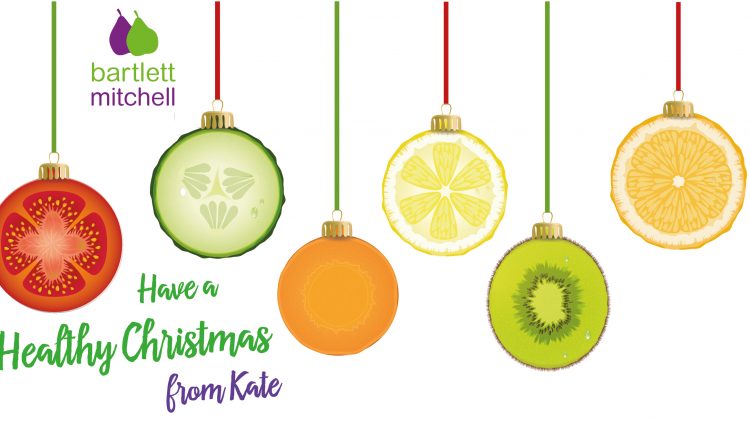
Christmas is a time of year that often invokes mixed emotions. We are joyful at the thought of spending time with our families and loved ones and embracing the festive celebrations and holidays. But for many it is also hectic and stressful, with too much to do and not enough time. Festive parties can come at a price, the pounds creep on and our clothes get tighter. So how can we have a healthy Christmas, enjoy the celebrations and stay calm?
Christmas Dinner History
Today’s Christmas Dinner is turkey, potatoes and vegetables followed by Christmas pudding and mince pies. It hasn’t always been that way. The feast that we now associate with Christmas really began to take shape in the Victorian era (#1).
Before the Victorians, a variety of other meats and dishes were served for Christmas. For those who could afford it, goose or venison was on the menu. For others it was beef or a pie made of meat off-cuts (#2). In medieval England, Christmas was a twelve-day feast ending on the Epiphany. Pickled boar meat made into brawn, as well as poultry and meat pies may have been served (#3).
Mince pies date back to the Tudor times and were made with sweetened minced meat. During the 19th century they were made without meat and added dried fruits and currants. They gained popularity and evolved into the mince pies we eat today.
Can festive food be healthy?
Although we associate our big Christmas meal with over-indulgence and gluttony, is it all bad for us? Surprisingly, the traditional Christmas meal has many health benefits.
Turkey
Turkey is the centre-piece of most Christmas meals and it is a good meat to celebrate with. It is a fantastic source of lean protein and is high in the amino acid tryptophan. Tryptophan makes the neurotransmitter serotonin, which helps boost our mood and make us feel good. It is also converted into melatonin, which is essential for good sleep. To get this benefit, eat it with a little carbohydrate. This helps it to cross the blood-brain barrier where it can be used (#4). Adding some potatoes (carb) is not so bad after all!
Brussel Sprouts
People either love or hate Brussel Sprouts . There are lots of reasons to love them. They are packed with nutrients including fibre, vitamin K, vitamin C, manganese and potassium (#5). Brussel Sprouts’ most fascinating compounds are their glucosinolates . In the body they are converted into isothiocyantes, which is an active cancer-protective enzyme system. Indole-3-carbinol is a glucosinolate breakdown product that has been beneficial against hormonal cancers (#5).
Red cabbage
Red cabbage is another popular Christmas vegetable. It provides a fantastic colour contrast to your meal AND a nutritional boost. The deep red colour comes from a group of compounds called flavonoids. These have shown considerable antioxidant and anti-inflammatory properties. Flavonoids help the body to produce more nitric oxide, which in turn helps to lower blood pressure (#6).
Root vegetables
Don’t be sparing on the potatoes and parsnips as they provide fantastic support for good digestive health. They contain resistant starch, which is an indigestible sugar and acts as a food source for the good bacteria in the gut. The gut feeds on the starch and ferments it. The beneficial bacteria multiply and release compounds including butyric acid, which helps to protect the gut (#7).
Tangerines and satsumas
Tangerines and satsumas are a perfect dessert or festive snack. They are rich in antioxidants including vitamins A and C and phyotnutrients, carotenoids, naringenin and luteins. They provide support for the immune system and help to keep winter colds at bay.
Christmas pudding
Although we can’t claim Christmas pudding or mince pies to be health foods, they are not all bad. The high content of dried fruit including raisins, sultanas and currants means that they are high in fibre, potassium, B vitamins and iron. Because they are also high in sugar it is best to stick to one small portion (#8).
4 ways to avoid the December bulge
We can see that the traditional Christmas meal is far from unhealthy, but what about the rest of December? It’s difficult to make healthy eating and drinking choices and keep the calorie count down. Here are 4 ways to enjoy yourself at parties without blowing it.
- Make sure you’re not hungry before you go out. If you are, you will be much more likely to eat more than you need and make less healthy food choices. Have a balanced snack before going out, such as some avocado or hummus on oat cakes, a piece of fruit with some nuts or a boiled egg. You will then be able to make conscious food choices. If there is nothing healthy on offer, you won’t automatically dive into the crisps.
- Be mindful of drinks. Before you go out make sure you’re well hydrated with lots of water. This helps to ensure you’re not thirsty and you will drink more slowly. Alcohol is a hidden source of calories and sugar. Consider alternating an alcoholic drink with a glass of water (you’ll be thankful for it in the morning too). This also applies to food, the slower you eat, the fuller you will feel (#9).
- Go light with sauces and instead opt for a meal of grilled fish or meat with cooked vegetables. Sauces are often a hidden source of salt, sugar and calories. Go easy on gravies, bread sauce, cranberry and red currant jelly. You can also swap the cream on your Christmas pudding for a little natural yoghurt.
- Portion control! Try not to pile your plate up high. Have a ‘little’ of everything. Remember the size of our stomach, which isn’t always as big as our we think it is! If you do overindulge, be kind to your body the next day. Rather than waking up and eating what you usually eat for breakfast, listen to your body. If you’re still full, replace your normal breakfast with a fresh juice or smoothie and lots of water instead.
Stay calm and carry on
As well as the socialising there are Christmas presents to buy and meals to prepare if you are hosting the big day. It can become a stressful time of year. It doesn’t need to be; a few easy steps can help keep you calm.
Plan ahead. Give yourself lots of time to get everything done. Start your Christmas shopping as early as you can and write a list of everything you need to buy. Set yourself deadlines and stick to them! Internet shopping can be a great way to shop if you don’t want to face the crowds or are distracted with other things on offer.
Have some quiet time. With so many demands, it’s more important to make sure you get enough quiet time. Give yourself twenty minutes every day to sit in peace, you will notice the difference. It helps you to recharge and recentre, and keeps your adrenaline at bay.
Go for a walk. If you don’t have time for your normal exercise routine, try to walk more. It stimulates digestion, stabilises blood sugar level after a meal and boosts metabolism. Why not take a walk between your Christmas lunch and pudding?
Keep perspective. It’s easy to feel pressured to buy the perfect gifts and make the perfect meal. But Christmas isn’t about everything being ‘perfect’. It is a time to get together with your loved ones and be joyful. That in itself is nourishing.
I hope my blog shows how it is possible for festive food to be healthy and for Christmas to be nourishing on many levels. This is the secret to a happy and healthy Christmas time!
References
# 1 http://www.bbc.co.uk/victorianchristmas/history.shtml
# 2 http://www.mirror.co.uk/news/uk-news/christmas-dinner-through-ages-festive-2932007
# 3 http://www.historytoday.com/maggie-black/common-room-christmas-dinner-1773
# 4 http://www.telegraph.co.uk/men/active/mens-health/10508353/The-surprising-nutritional-benefits-of-Christmas-Day-lunch.html
#5 http://articles.mercola.com/sites/articles/archive/2014/11/16/benefits-brussels-sprouts.aspx
# 6 http://lpi.oregonstate.edu/mic/dietary-factors/phytochemicals/flavonoids
# 7 http://www.fermented-foods.com/resistant-starch-surprising-prebiotic
# 8 http://www.nhs.uk/livewell/healthychristmas/pages/christmaslunch.aspx
# 9 https://www.vavistalife.com/hidden-health-benefits-christmas-dinner/
Kate Cook
Share on:
Marketing Director
More from Lin Dickens